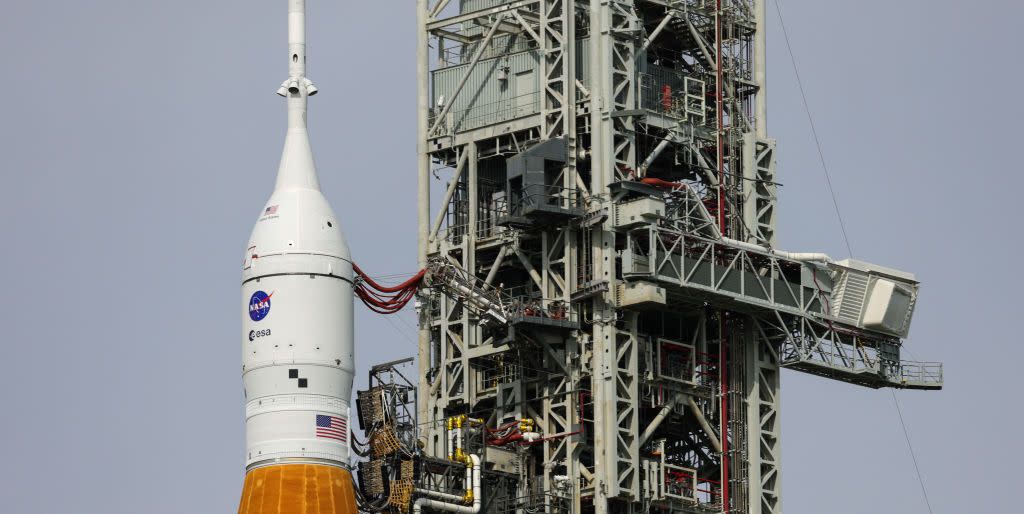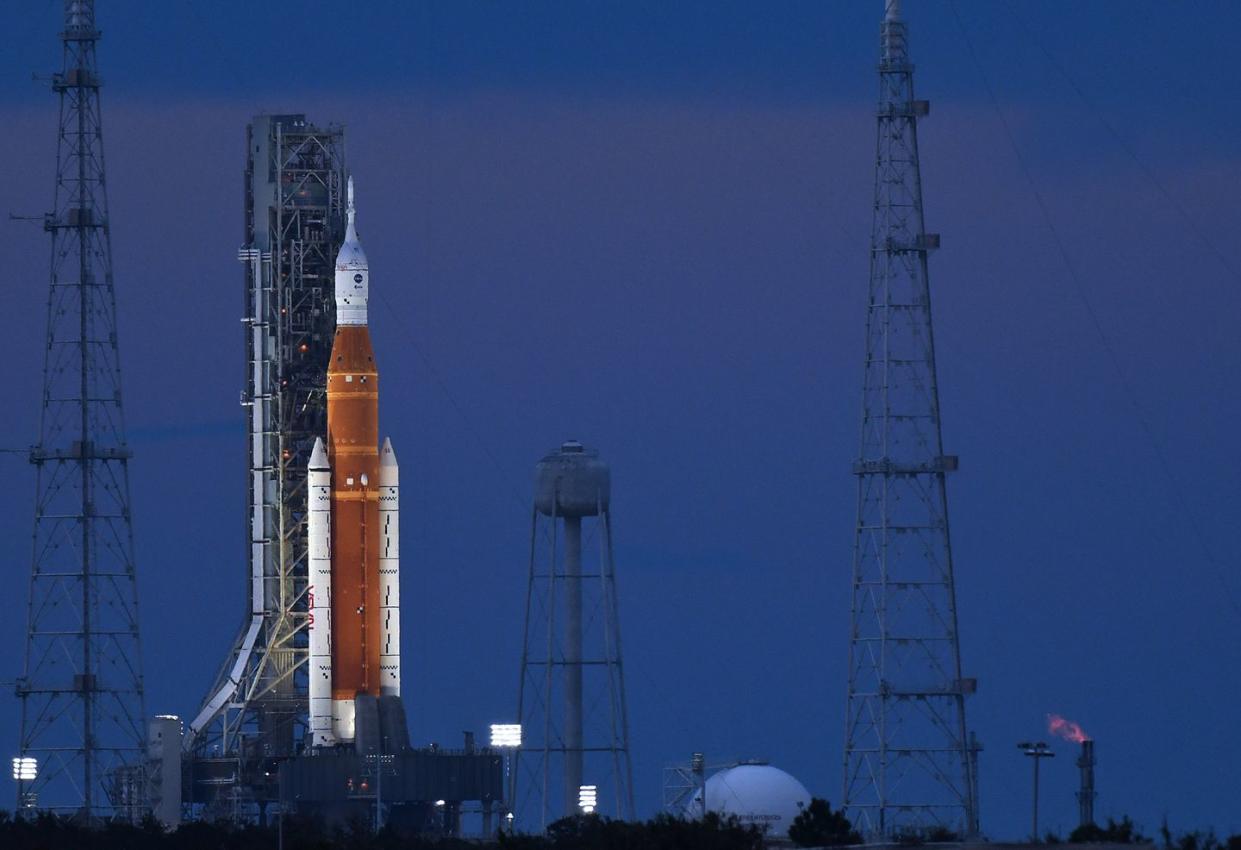How NASA Cleared the Artemis Rocket for Launch Despite Hurricane Nicole Damage

"Hearst Magazines and Yahoo may earn commission or revenue on some items through the links below."
Engineers closely examined the damage to the Artemis rocket and performed simulation tests for the worst-case scenario.
They determined that the mission is not jeopardized and may proceed as planned.
It’s natural for a brand-new space launch vehicle to experience multiple delays before its first launch, says a systems engineer who studies spaceflight.
The Artemis moonshot is cleared to proceed early Wednesday morning at the Kennedy Space Center in Cape Canaveral, Florida. Engineers closely inspected the Artemis spacecraft after Hurricane Nicole buffeted the massive assembly last week. They found a thin, 10-foot strip of caulk-like material loosened from the base of the Orion crew capsule’s protective nose cone at the top of the rocket.
🚀 You think spaceflight is awe-inspiring. So do we. Let’s nerd out over it together.
Engineers don’t have access to fix the spacecraft on the launch pad. However, they have determined that this damage won’t jeopardize the mission, Jim Geffre, Orion’s vehicle integration manager, tells Popular Mechanics. His team makes sure the spacecraft works as one cohesive whole.
The rocket experiences its highest pressures at speeds of Mach 2 and Mach 3 (two and three times the speed of sound) about 80 to 100 seconds after takeoff, Geffre says. The insulation is designed to minimize the resulting aerodynamic heating at the points where Orion’s launch-abort system meets the crew-module adapter. The launch-abort system can pull astronauts away from the rocket in the event of a malfunction.
“As you fly through the atmosphere, you don’t want gaps from the air to flow in. We apply room-temperature vulcanizing (RTV) silicone all the way around the spacecraft to seal the joint,” Geffre says. It’s very thin—less than a tenth of an inch in most places.
After the storm passed, engineers examined all the pieces that had come free, and performed the standard safety checks that NASA would use for a manned mission. “We have computational fluid dynamic simulations to show how a piece could travel through the flow field as the rocket goes to space. We could simulate thousands of pieces,” Geffre explains.
The simulation demonstrated that Artemis would be safe to fly, because it would not overheat, and even if more pieces come loose, they are not expected to hit the rest of the space launch system and cause any damage. “So we were able to clear all concerns to show it was low risk. We normally don’t get hurricanes this late, in November. So it’s an unexpected event, but we take a close look at the entire launch vehicle. It does spend time in the elements, so we always make sure the spacecraft and launch vehicle are ready to fly before we ever start the launch process.”
Delays Are Normal for a Brand-New Space Launch Vehicle
The rocket assembly stayed on the pad at the Kennedy Space Center amid hurricane-force winds last week, because it would have been a greater risk to shift it back to a covered building. Other technical glitches and bad weather, including a hydrogen leak, have delayed the Artemis mission repeatedly. However, these types of delays are to be expected for a brand-new, never-launched vehicle, says Paul Grogan, assistant professor of systems and software engineering at Steven’s Institute of Technology in Hoboken, New Jersey. Grogan has recently published work to model the probability of launch delays for human spaceflight missions.

The Artemis mission is high-stakes, because it envisions bringing humans back to lunar orbit, and eventually the lunar surface, Grogan tells Popular Mechanics. “So the first launch of a new vehicle is always a challenge, right? The Space Launch System is an enormously complex system. And this is the first time it’s being used. So there’s always issues that come up,” he explains. “You want to be able to find things that you couldn’t have found in more isolated tests or simulation tests. … The delays that we’ve seen so far, it’s to be expected for the level of maturity of this hardware.”
Decisions that NASA makes to launch, or not to launch, depend on extensive test procedures that are performed repeatedly, and involve many decision trees about which direction to take. For example, what do you do if the sensor readings differ from what is actually happening onboard the vehicle?
Florida weather is definitely part of the criteria used in routine assessments, so while it causes a delay, engineers at NASA are all of one mind, Grogan says. “This is kind of NASA’s reentry to the cutting edge of space exploration. So it’s a super exciting opportunity. From the top decision-makers down to the technicians who helped assemble the vehicles, everyone is very focused on making a successful mission.”
If all goes well, the Artemis 1 mission will propel the Orion spacecraft past the moon and back. It will be a critical test of every system that astronauts will need for the Artemis 2 manned mission to the moon: propulsion, navigation, and solar power. A third mission will take humans back to land on the moon, sometime between 2025 and 2026.
A two-hour window for launch is set for 1:04 a.m. EST Wednesday. You can watch it live on NASA TV, with pre-launch coverage starting at 3:30 p.m. EST. Full launch coverage in English will begin at 10:30 p.m. and NASA en espanol broadcast coverage will begin at 12 a.m. Wednesday.
You Might Also Like
